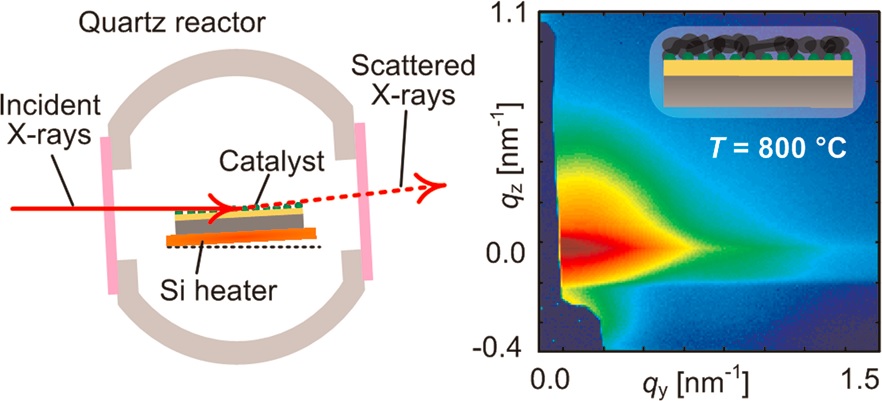
Year
2012Volume
6Issue
6Pages
5091–5101Abstract
The production of high-performance carbon nanotube (CNT) materials demands understanding of the growth behavior of individual CNTs as well as collective effects among CNTs. We demonstrate the first use of grazing incidence small-angle X-ray scattering to monitor in real time the synthesis of CNT films by chemical vapor deposition. We use a custom-built cold-wall reactor along with a high-speed pixel array detector resulting in a time resolution of 10 msec. Quantitative models applied to time-resolved X-ray scattering patterns reveal that the Fe catalyst film first rapidly dewets into well-defined hemispherical particles during heating in a reducing atmosphere, and then the particles coarsen slowly upon continued annealing. After introduction of the carbon source, the initial CNT diameter distribution closely matches that of the catalyst particles. However, significant changes in CNT diameter can occur quickly during the subsequent CNT self-organization process. Correlation of time-resolved orientation data to X-ray scattering intensity and height kinetics suggests that the rate of self-organization is driven by both the CNT growth rate and density, and vertical CNT growth begins abruptly when CNT alignment reaches a critical threshold. The dynamics of CNT size evolution and self-organization vary according to the catalyst annealing conditions and substrate temperature. Knowledge of these intrinsically rapid processes is vital to improve control of CNT structure and to enable efficient manufacturing of high-density arrays of long, straight CNTs.






